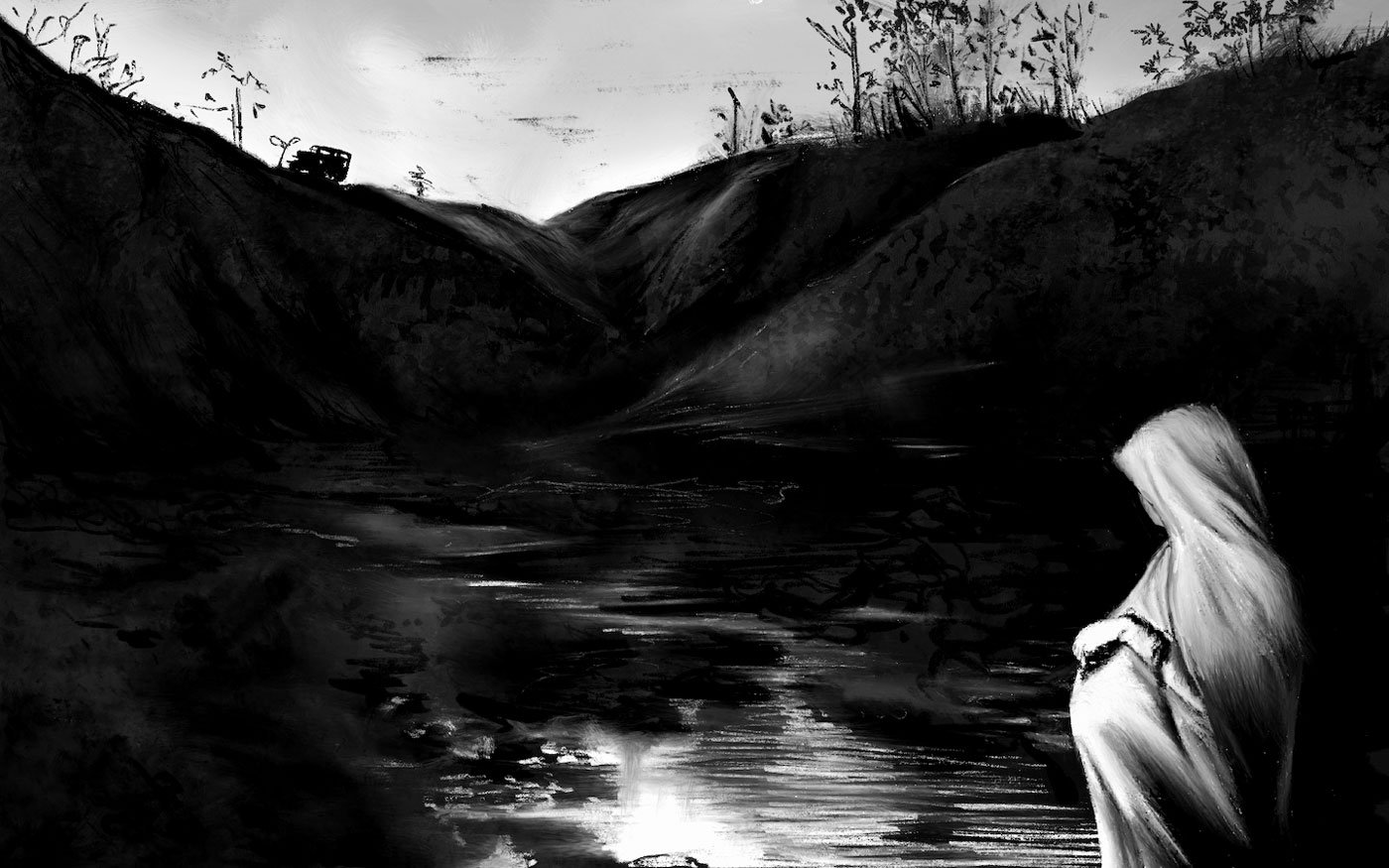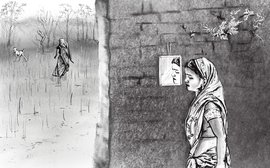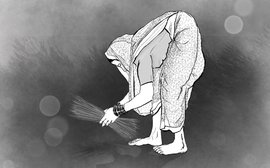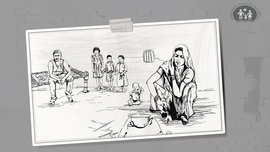Pallavi Gavit, five months pregnant, had been writhing in pain on a khat (charpoy) for over three hours. Her sister-in-law Sapna Garel, 45, was with her when Pallavi’s uterus slipped out of her vagina, a five-month-old male foetus lifeless inside. In unbearable pain, blood and secretions dripping onto the floor, Pallavi fell unconscious.
It was 3 a.m. on July 25, 2019. The rain was hammering down on Pallavi's thatched hut in Henglapaani, a hamlet of 55 Bhil families is in the Satpuda hills. In this inaccessible part of Nandurbar district in northwestern Maharashtra, there are no pucca roads, no mobile networks. “Emergencies don’t come by invitation. They can occur anytime," says Pallavi's husband Girish ( all names have been changed in this story ). "Without network coverage, how can we even call an ambulance or doctor?”
“I was terrified," 30-year-old Girish continues. "I didn’t want her to die.” At 4 a.m., in the dark and in pelting rain, Girish and a neighbour carried Pallavi on a makeshift bamboo-and-bedsheet stretcher up the slushy Satpuda hills towards Dhadgaon, 105 kilometres away.
Henglapaani hamlet is in the Toranmal gram panchayat region of Akrani taluka . The Toranmal rural hospital would have been closer, but that road was not safe that night. Barefoot (the wet mud makes it difficult to wear slippers), Girish and his neighbour struggled to get a grip on the muddy pathways. Pallavi, covered with a plastic sheet, was moaning in pain.
They climbed uphill for nearly three hours until they reached the Toranmal Ghat road. “It is around 30 kilometres uphill,” says Girish. From there, they paid Rs. 1,000 to hire a jeep that drove them towards Dhadgaon village. After five hours on the road, Pallavi was admitted to a private nursing home in Dhadgaon – the rural hospital there was a further 10 kilometres away. “I took her to the very first dawakhana [health facility] I saw. It was expensive, but at least they saved my Pallavi,” he says. The doctor charged them Rs. 3,000 and discharged her the next day. “He said she could have died from the heavy bleeding,” Girish recalls.
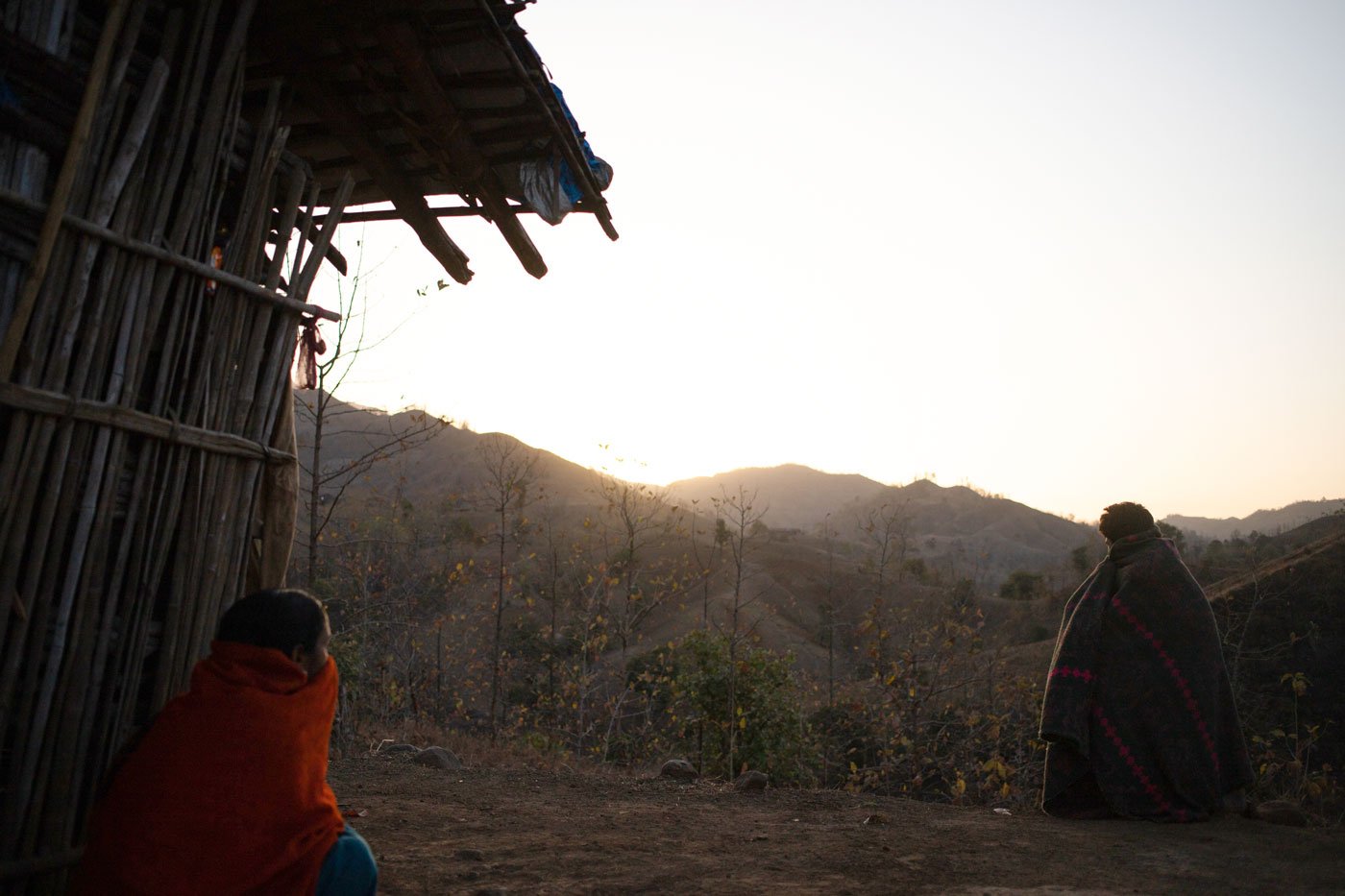
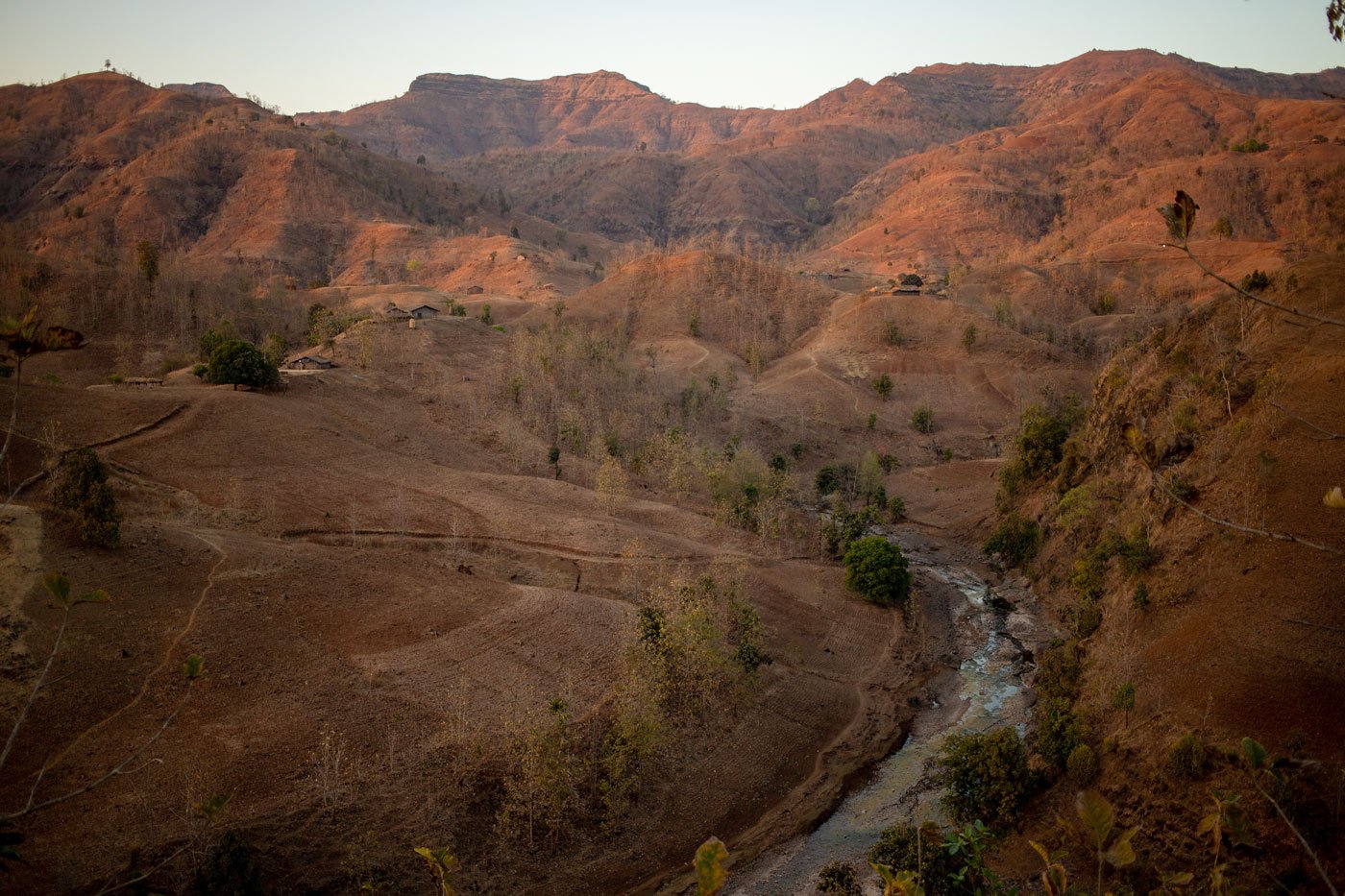
In the dark and in pelting rain, Girish (also in the photo on the left is the ASHA worker), and a neighbour carried Pallavi on a makeshift stretcher up the slushy Satpuda hills
Months later, Pallavi still experiences daily discomfort and pain. “My kaat [uterus] keeps coming out from my yoni [vagina] whenever I lift a heavy utensil or bend down,” she says. Pallavi is 23 and has a one-year-old daughter, Khushi. She was born at home, safely, with the help of an accredited social health activist (ASHA) from Henglapaani hamlet. But her untreated uterine prolapse makes it difficult for her to take care of the baby.
“I have to bathe Khushi, feed her, lift her several times a day, play with her,” Pallavi tells me. “With a lot of physical activity, sometimes I have a burning sensation in my stomach, pain in the chest, and difficulty sitting and getting up.”
While Girish takes their two cows out to graze, it is Pallavi who must fetch water every day from the stream down the hill. “It is two kilometres downhill. But that is the only source of water for us,” she says. By April-May even that source dries up, forcing Pallavi and the other women in the hamlet to climb further down in search of water.
She and Girish cultivate maize and jowar on two acres during the monsoons. The yield on these steep slopes is poor, Girish says. “We get four or five quintals [400-500 kilograms], of which I sell 1-2 quintals to grocery stores in Toranmal at Rs. 15 per kilo.” When the annual harvest is done, Girish migrates to Navsari district in neighbouring Gujarat to find work on sugarcane farms. He manages to earn a daily wage of Rs. 250 for roughly 150 days a year.
With all the work at home and on the farm, Pallavi is left with no energy to trek to the nearest primary health centre (PHC) in Japi village, around 35 kilometres away – though she often has a fever, feels dizzy and even falls unconscious. The ASHA worker, she says, gives her some medicines. “I want to go to the doctor, but how? I am very weak," she adds. Walking that distance through the hills with her prolapsed uterus is almost impossible for her.
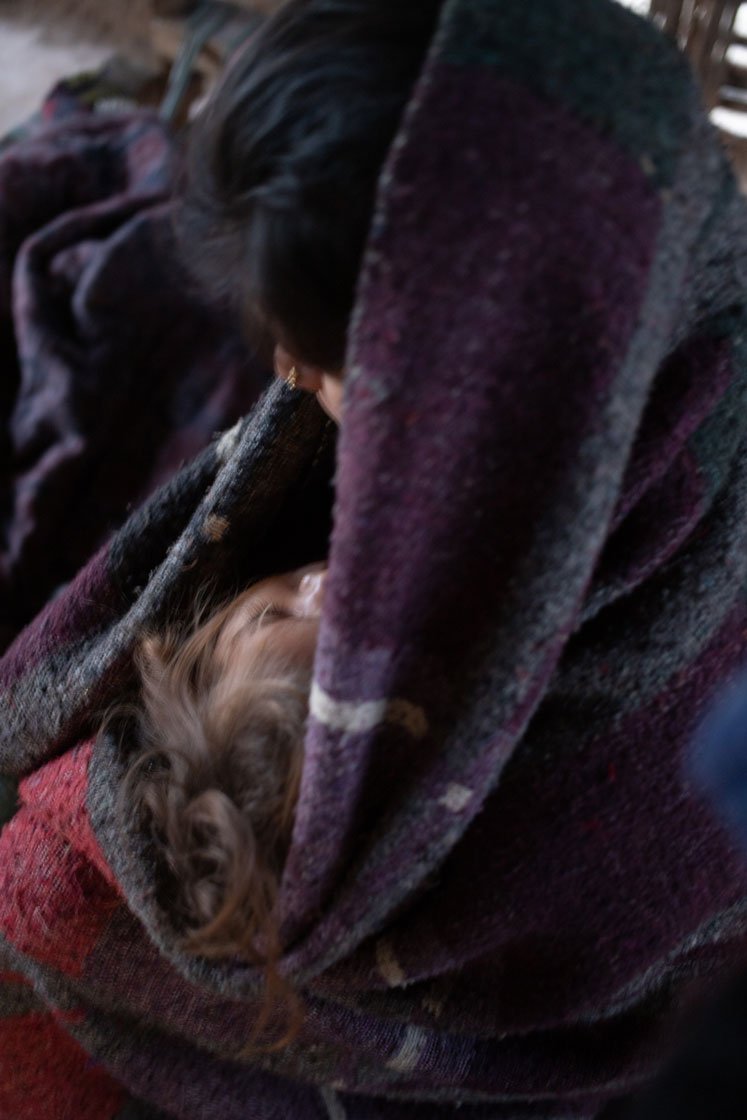
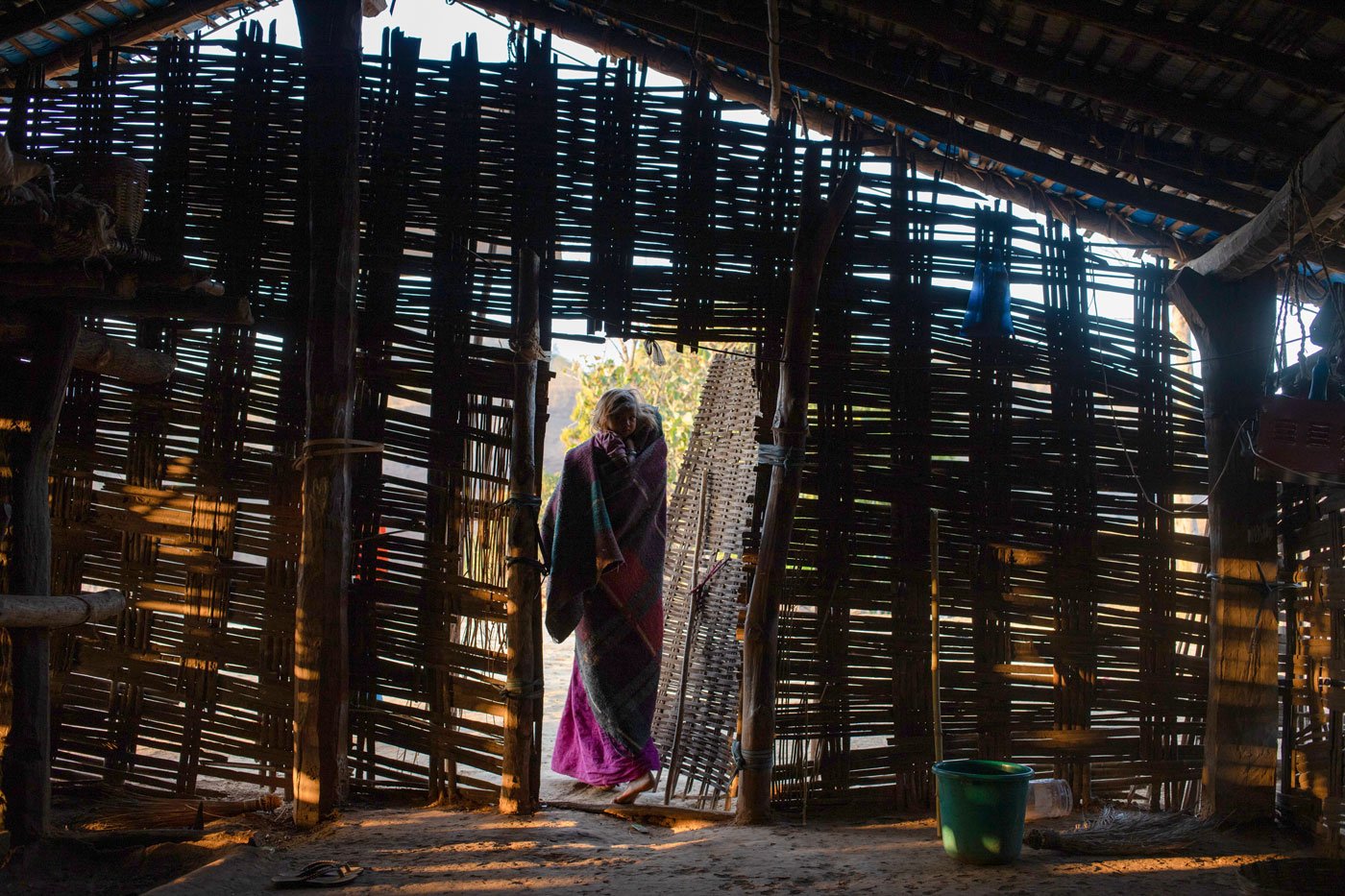
'I have to bathe Khushi, feed her, lift her several times a day, play with her', says Pallavi Gavit. 'With a lot of physical activity, sometimes I have a burning sensation in my stomach, pain in the chest, and difficulty sitting and getting up'
Toranmal gram panchayat 's population of 20,000 (as estimated by a gram panchayat member) is spread over 14 villages and 60 hamlets. They are served by one PHC in Japi, six sub-centres, and one 30-bed rural hospital in Toranmal June (Old) village that provides contraceptive care like condoms, oral pills, sterilisation procedures and insertion of IUDs, as well as prenatal and antenatal services. But because the hamlets are in remote locations in this difficult terrain, most of the women have home-based childbirths.
“The number of obstructed labour cases in Toranmal is high because tribals here live on the top of hills, climbing up and down several times a day for water, even during pregnancy. This causes complications and premature childbirth,” says a doctor from the Japi PHC, who does not want to be named. The PHC, staffed with two doctors, two nurses and one ward assistant, was set up as recently as 2016, and sees only four to five patients a day. “People come only when the situation gets really bad or when the bhagat’s [traditional healer] treatment fails,” he says.
Between April 2019 and March 2020, the doctor saw five cases of uterine prolapse. “All of them needed 100 per cent surgical intervention. So we referred them to the Nandurbar civil hospital. There is no facility to treat such chronic obstetrics cases here,” he says.
Uterine prolapse occurs when the pelvic floor muscles and ligaments stretch or weaken, and are no longer able to support the uterus. “The uterus is a muscular structure that is held in place inside the pelvis with various muscles, tissue and ligaments,” explains Dr. Komal Chavan, Mumbai-based chairperson of the Federation of Obstetric and Gynaecological Societies of India. “Because of pregnancy, multiple childbirth, prolonged labour or mishandling [of delivery], in some women these muscles weaken, causing prolapsed uterus.” Severe cases may require reconstruction surgery to repair the weakened pelvic floor tissues, or a hysterectomy (surgical removal of female reproductive organs), depending on the age of the woman and the severity of the problem.
A 2006-07 study of chronic obstetric morbidities (COM) among rural women in Nashik district, Maharashtra, published in the Indian Journal of Medical Research in 2015, found that of the 136 women reporting COM, genital prolapse was the most prevalent (62 per cent). In addition to advancing age and obesity, “obstetric factors such as high parity and deliveries conducted by traditional birth attendants were significantly associated with the occurrence of prolapse,” the report notes.
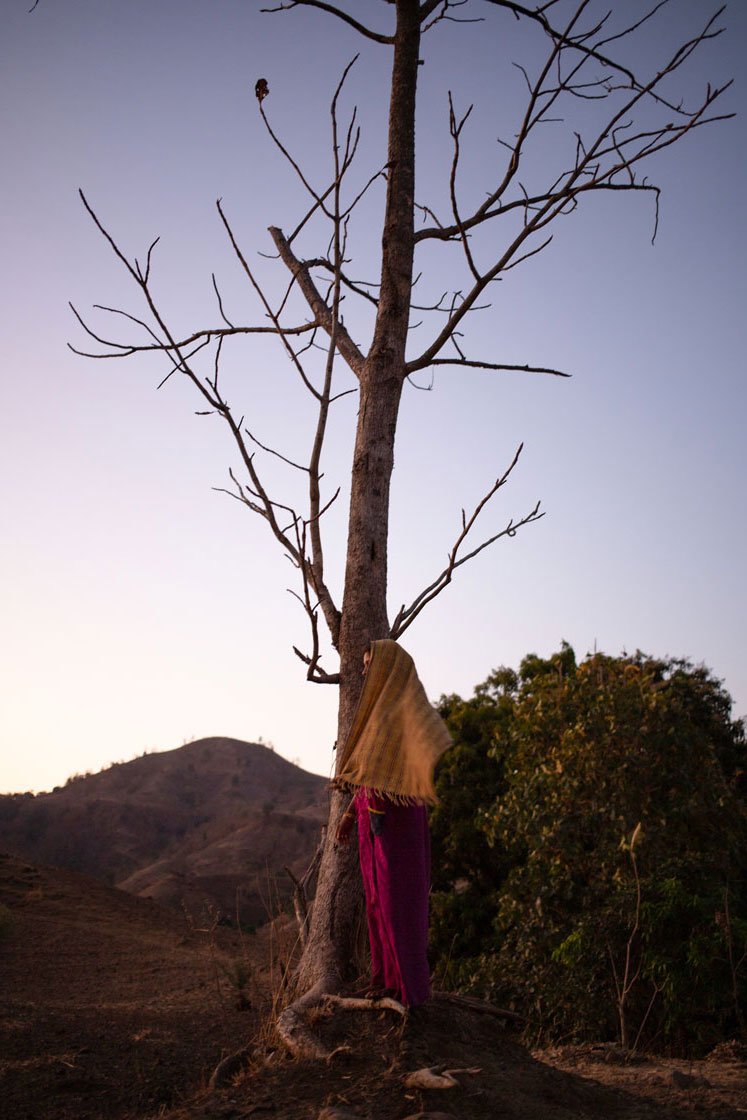
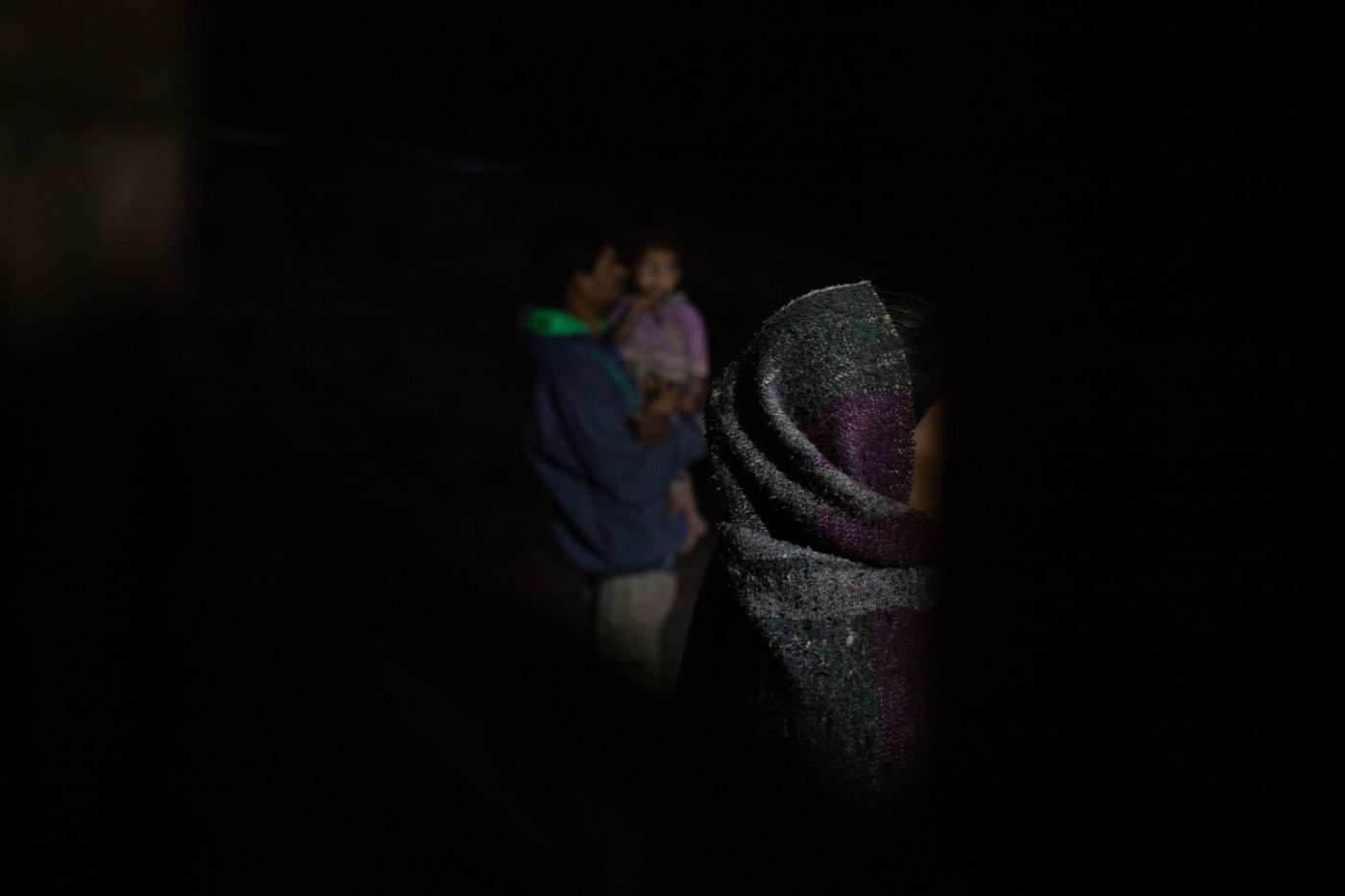
Pallavi and Girish are agricultural labourers in Nandurbar; Pallavi's untreated uterine prolapse makes it hard for her to take care of their daughter
The Nandurbar civil hospital, where Pallavi could get free surgical treatment for her uterine prolapse, is nearly 150 kilometres away from Henglapaani, her hamlet. Getting there would mean that three-hour climb uphill and then a four-hour bus journey. “When I sit I feel I am sitting on something and it hurts," Pallavi says. "I cannot sit in one place for long.” The state transport bus on this route makes a single trip at around 1 p.m. from Toranmal. “Can’t doctors come here?” she asks.
With no road connectivity, patients in Toranmal have no access even to the mobile medical units that provide healthcare at the doorstep in remote regions, the doctor notes. In Akrani block, 31 villages and many more hamlets are not connected by road. The Maharashtra government's Navsanjivani Yojana provides for mobile medical units in inaccessible areas with one medical officer and one trained nurse, and two such units are functional in Akrani taluka , according to the Maharashtra Tribal Development Department's Annual Tribal Component Schemes report for 2018-19, but they cannot reach hamlets like Pallavi's.
The Japi PHC itself has “no electricity, no water, and no accommodation for the staff," the doctor there says. “I have written many letters to the health department regarding this, but there is no progress.” The health workers find it impossible to travel to Japi from Nandurbar every day. “So we work here on weekdays, spending the night at an ASHA worker’s house. We return to our homes in Nandurbar on the weekend,” the doctor adds.
This makes the role of the ASHA workers in the area even more crucial. But they too struggle with limited stocks of medicines and kits. “We don’t get a regular supply of iron and folic acid tablets for pregnant women or disposable delivery kits with mask, gloves and scissors,” says Vidya Naik ( name changed ), ASHA facilitator from Henglapaani, who supervises the work of 10 ASHAs in 10 hamlets.
Some ASHA workers are trained to conduct deliveries, but not complicated ones. Vidya records two to three infant mortalities and one or two maternal deaths every month that result from unsafe home deliveries. “We don’t need anything else – just give us a safe road to travel for safe deliveries,” she says.
“Along with antenatal care for early intervention, qualified gynaecologists are especially important in difficult geographical terrains, where women’s daily duties are even more challenging,” Dr. Chavan adds.
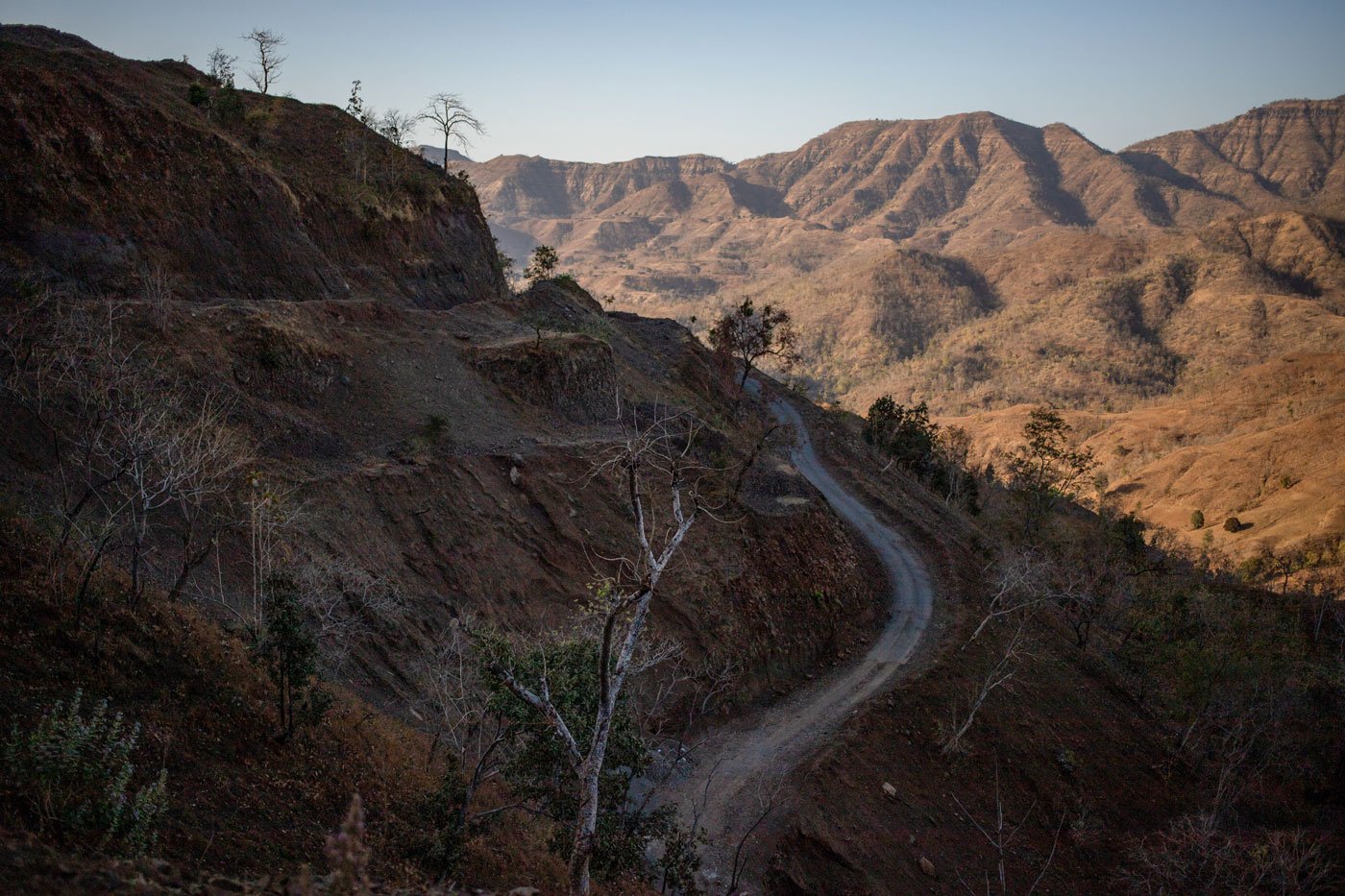
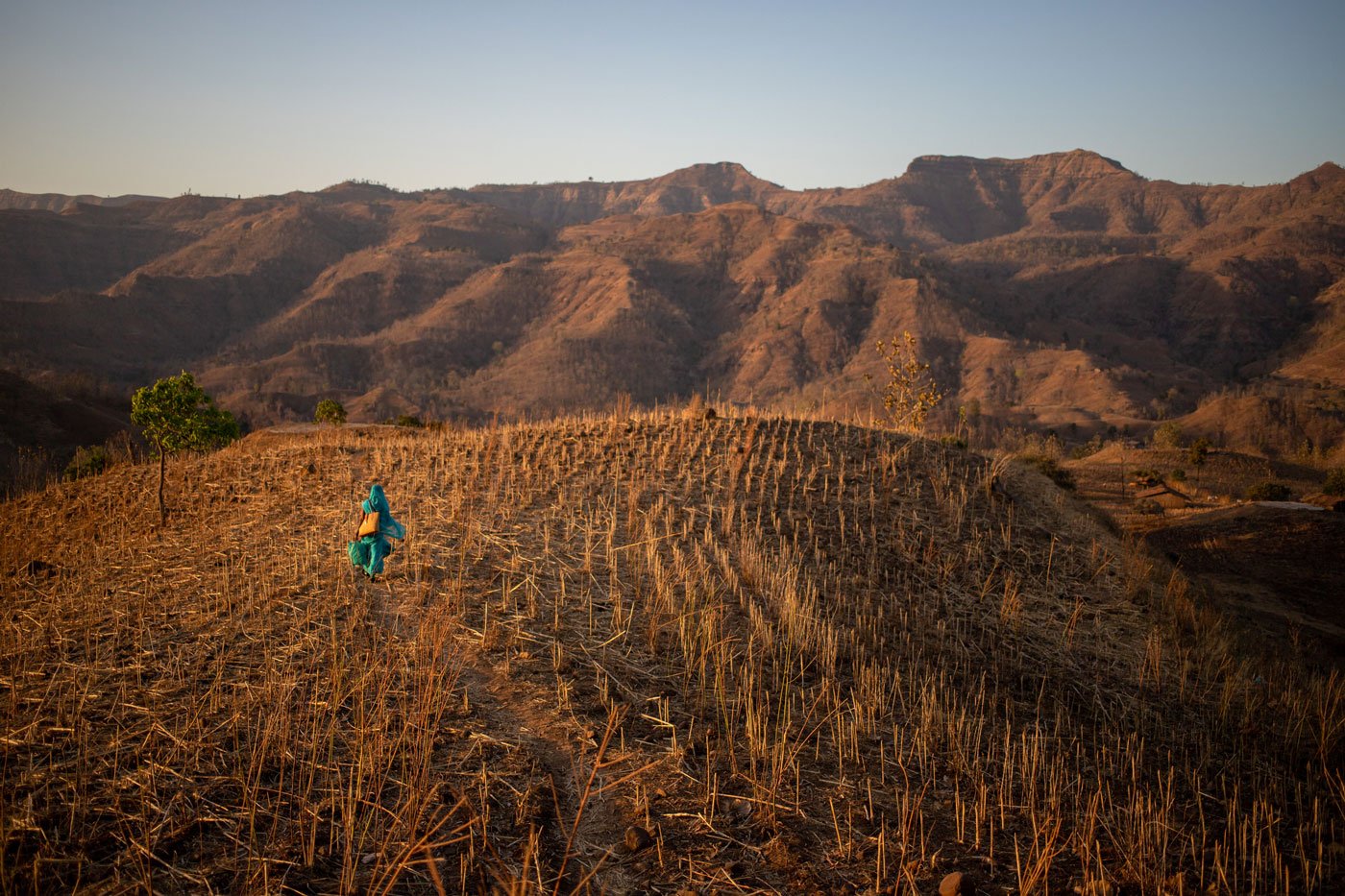
With no road connectivity, patients in Toranmal have no access even to the mobile medical units that provide doorstep healthcare in remote regions
However, the Government of India's Rural Health Statistics 2018-19 record that of 1,456 specialists required at community health centres in Maharashtra – four at each centre, including a surgeon, gynaecologist, physician and paediatrician – only 485 were in position by March 31, 2019, leaving a shortfall of 971 or 67 per cent.
The National Family Health Survey-4 ( NFHS-4 , 2015-16) notes that only 26.5 per cent of mothers in rural Nandurbar received full antenatal care, only 52.5 per cent had institutional deliveries, and only 10.4 per cent of those who had home deliveries were assisted by skilled health personnel.
Nandurbar district, with a large Adivasi population – predominantly Bhil and Pawra – is at the lowest rank in the Maharashtra Human Development Index 2012, grappling with malnourishment and poor infant and maternal health
Around 40 kilometres from Pallavi’s house is Legapaani hamlet, on another hilltop inside the Toranmal forest. There, in her dark thatched hut, Sarika Wasave ( not her real name ) was boiling palash ( Butea monosperma ) flowers in water. “My daughter has a fever. I will bathe her with this. She will feel better,” says 30-year-old Sarika, who belongs to the Bhil community. She is six months pregnant and finds it difficult to sit for long in front of the stone chulha (stove). “My eyes burn. And it hurts in there [pointing to her groin]. My back also hurts,” she says.
Fatigued and weak, Sarika also has a prolapsed uterus. But she is forced to continue doing all the daily chores. Every time she urinates or pushes a little hard during bowel movements, her uterus descends and protrudes from her vagina. “I push it back with the corner of my saree; it hurts,” she says, breathing heavily and wiping the sweat off her face. She turns her face aside as a gust of smoke from the chulha hits her.
She has been suffering the prolapsed uterus for three years. In 2015, when she was eight months pregnant, she had sudden labour pains at 1 a.m. Her mother-in-law performed the delivery and after six hours of labour, Sarika’s uterus had slipped out of her vagina. “I felt as if someone had dragged a part of me out," she recalls.
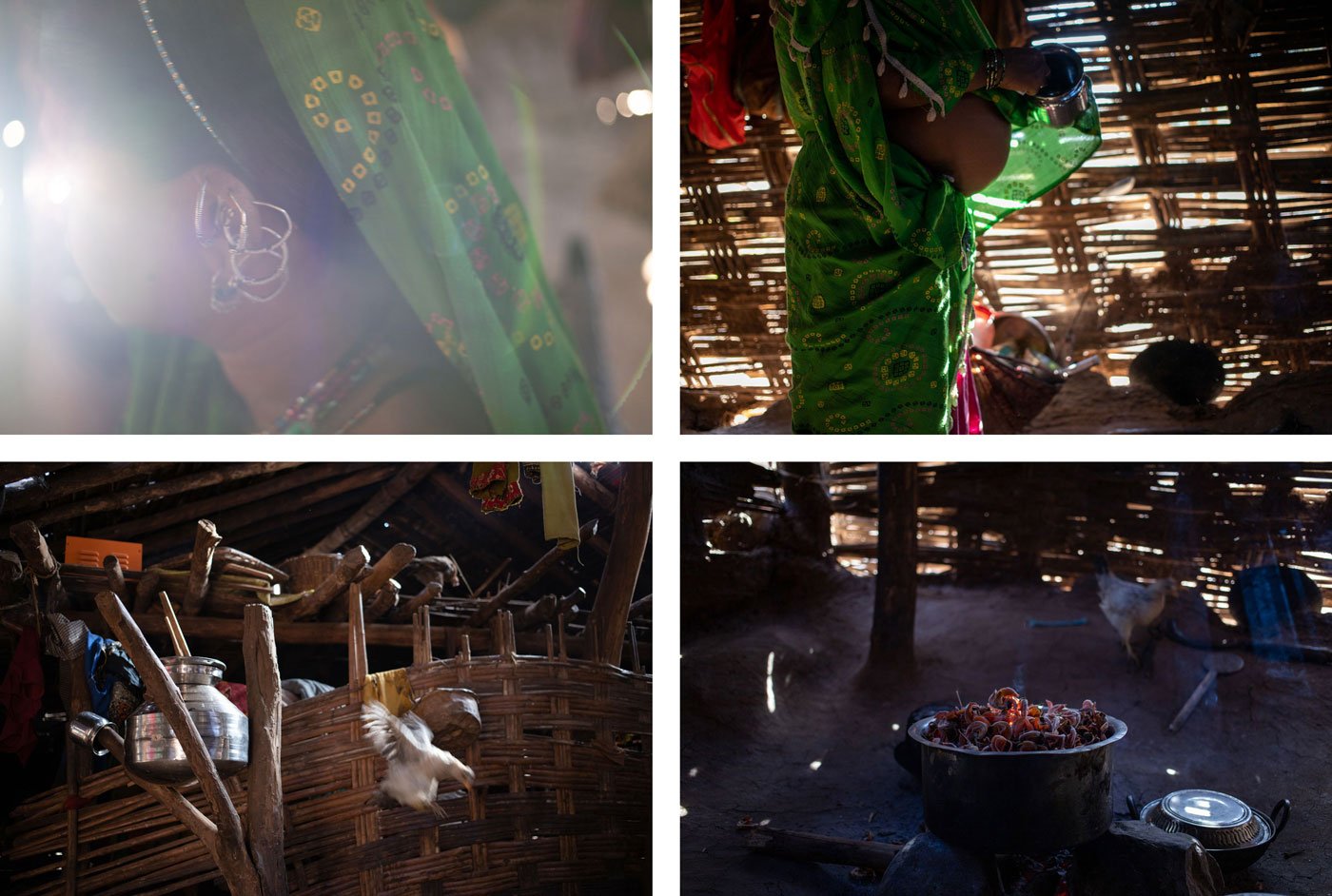
Sarika Wasave, six months pregnant, was boiling palash flowers (bottom right): 'My daughter [five years old] has a fever. I will bathe her with this. She will feel better'
“An untreated uterine prolapse can lead to further complications such as urinary infection, bleeding upon friction, infection and pain – all leading to discomfort in daily movements,” says Dr. Chavan. The condition can worsen with advancing age, she adds.
Women with any degree of prolapsed uterus are told to avoid lifting heavy weights, and advised a high-fibre, nutritious diet with plenty of water to avoid constipation. But Sarika has to struggle to get even one full meal a day and a pot of water. Pregnant or not, she must walk eight kilometres downhill to the handpump every day to collect water. The steep climb back is slow and even more difficult. “The friction of the kaat with my thighs causes burning. Sometimes it bleeds,” she tells me. As soon as she gets home, she pushes the prolapsed part in.
In addition to the physical suffering, there are social and economic consequences to this condition. A prolapsed uterus can affect a marital relationship, leading to abandonment or rejection by the husband, as has happened with Sarika.
Sarika's husband Sanjay ( name changed ) married again after she suffered the prolapse. Sanjay works at hotels in Dhadgaon, earning Rs. 300 a day for four to five days of work a month. “He spends his income on his second wife and son," Sarika says. He barely ever works in the fields. So Sarika herself cultivated one quintal of maize on their two-acre farm during the 2019 monsoon. “My husband took 50 kilograms for his second wife and child and the rest I ground for bhakri .”
With no source of income, often Sarika depends on the ASHA worker and some villagers to give her rice and dal . Sometimes, she borrows money. “I have to return the 800 rupees a villager loaned me in June [2019] to buy rations and seeds,” she says.
And sometimes her husband beats her and forces her to have sex. “He doesn’t like my condition [prolapsed uterus]. That’s why he married again. But he comes when he is drunk. I cry with pain [during intercourse], but then he beats me,” she says.
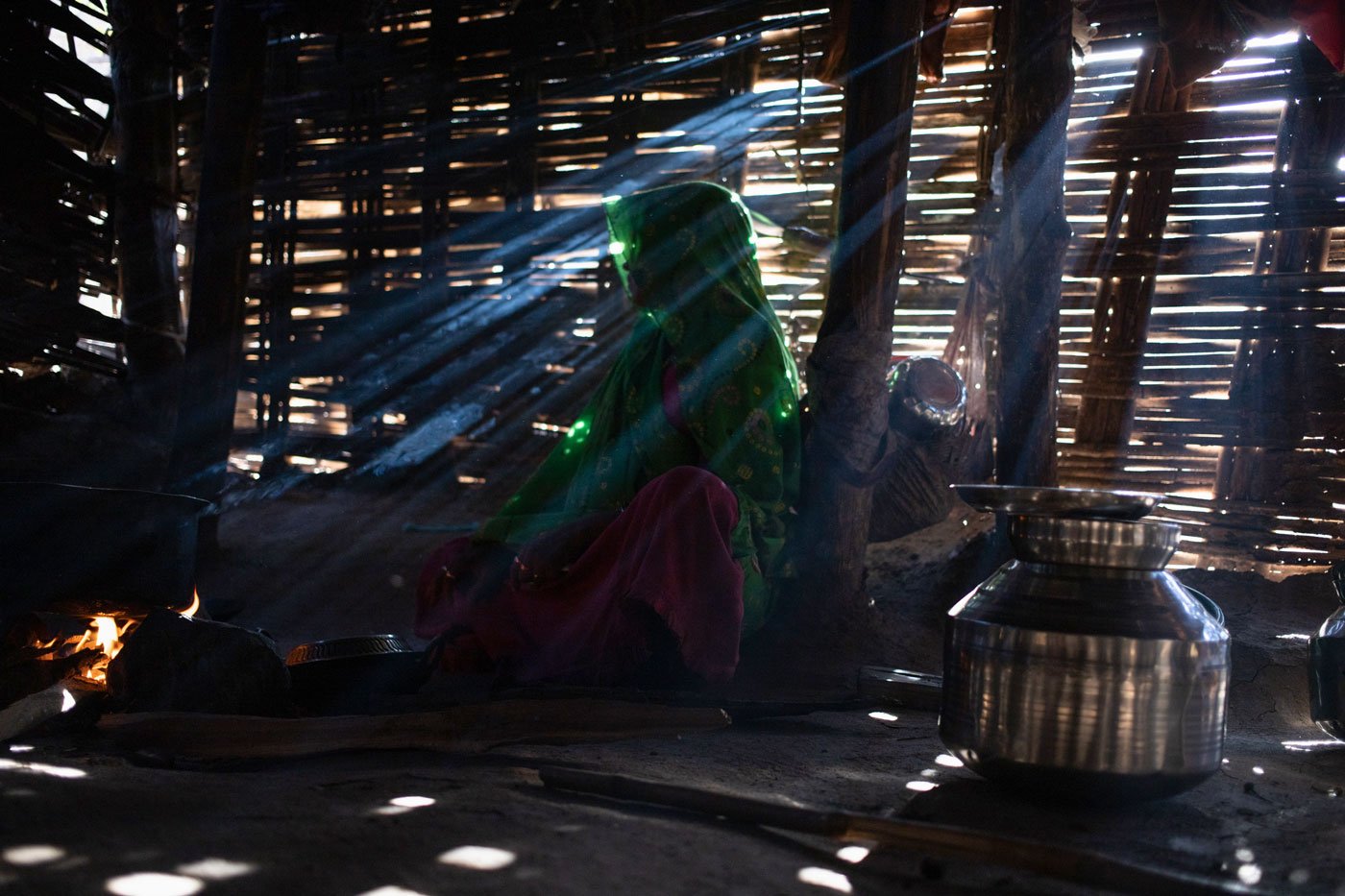
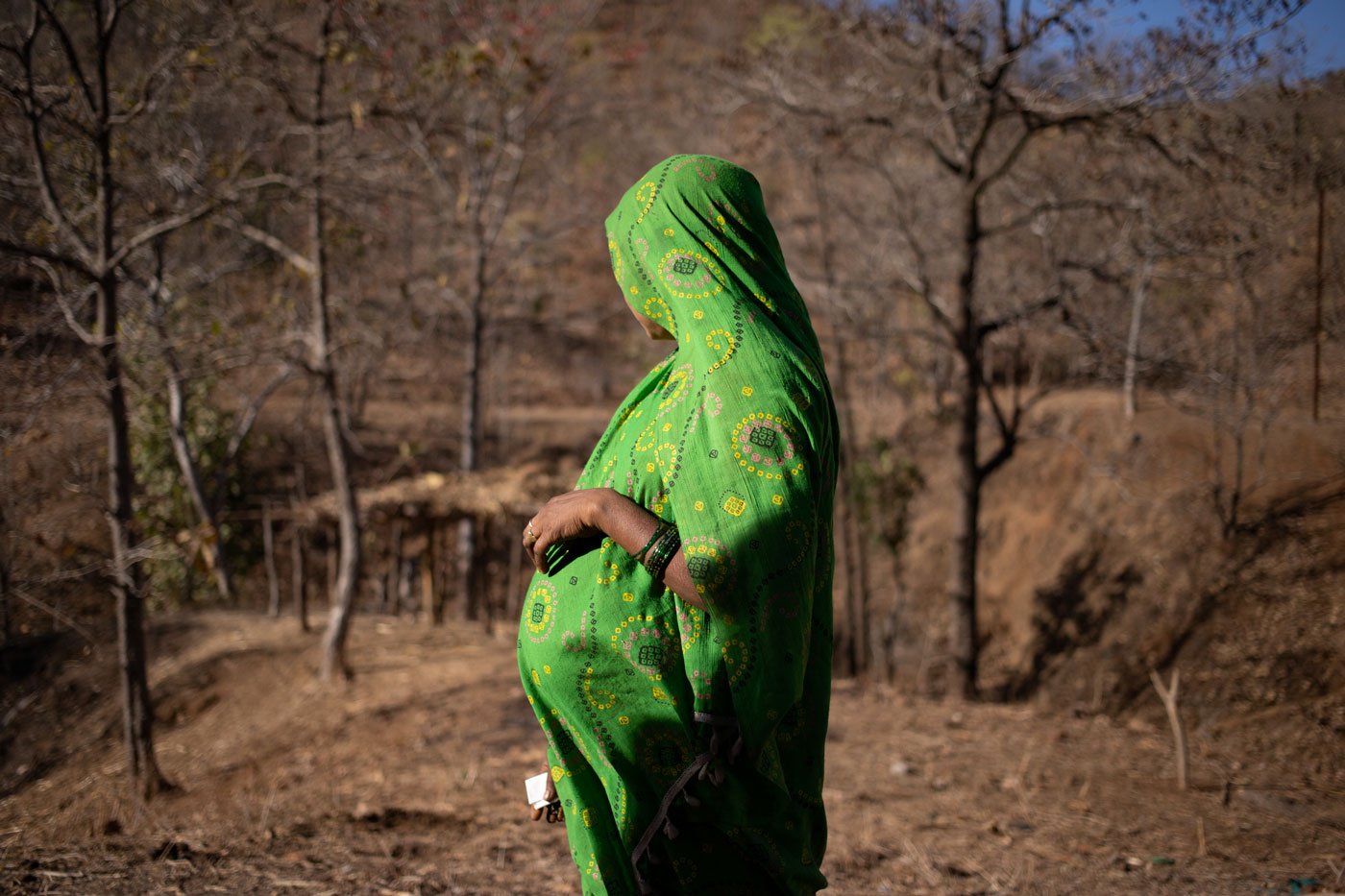
With no steady source of income, Sarika often depends on the ASHA worker and some villagers to give her rice and
dal
The day I meet her, a pot of cooked rice is kept beside the chulha . This is the day's only meal for herself and her five-year-old daughter Karuna. “Only around one kilo of rice is left at home,” she says. That is all that remains of the three kilos of rice and eight kilos of wheat she got on her BPL ration card. Her three goats are the only additional source of nutrition. “I get a glass of milk every day from one goat,” she says. That milk too she divides equally between her daughter and her four-year-old stepson Sudhir, who lives two kilometres away with his mother.
The rural hospital in Toranmal is 15 kilometres from Sarika's hut and the sub-health centre is five kilometres away. It’s a steep climb. The shared jeep service is infrequent, forcing her to walk the distance. “I can’t walk much. I get breathless very quickly,” she says. During her antenatal visits at the sub-centre, she too was detected with sickle cell disease, an inherited blood disorder that affects haemoglobin and causes anaemia.
Toranmal rural hospital, built in 2016, has 30 beds. The daily outpatient department sees 30 to 50 patients, says medical officer Dr. Suhas Patil. They come with minor ailments such as fever, colds or physical injury. Only one or two patients come for deliveries every month from some 25 surrounding villages. The hospital has two medical officers, seven nurses, one laboratory (but no technician), and one lab assistant. There is no position for an obstetrician and gynaecologist, or any other specialist to treat serious cases like Sarika's.
“We don’t get cases of prolapsed uterus. Most of the cases present with pelvic bleeding and sickle cell anaemia. Even if we do get such cases, we don’t have the facility or the expertise to treat them,” says Dr. Patil, who has been working at the hospital since 2016, and stays at the hospital’s staff quarters.
Even if they did have the facility and expertise, Sarika may not have told the doctor about her prolapsed uterus. “It is a babpya [male] doctor. How can I tell him that my kaat is falling out?” she asks.
Photographs: Zishaan A. Latif is an independent photographer and filmmaker based in Mumbai. His work has been featured in collections, exhibitions and publications worldwide:
https://zishaanalatif.com/
PARI and CounterMedia Trust's nationwide reporting project on adolescent girls and young women in rural India is part of a Population Foundation of India-supported initiative to explore the situation of these vital yet marginalised groups, through the voices and lived experience of ordinary people.
Want to republish this article? Please write to [email protected] with a cc to [email protected]
